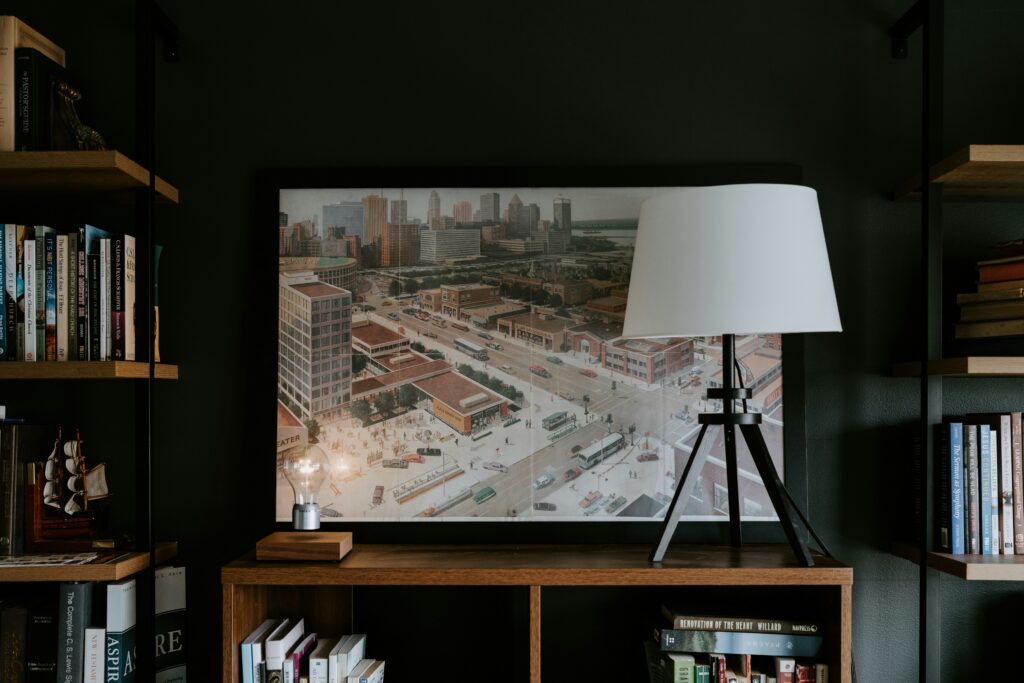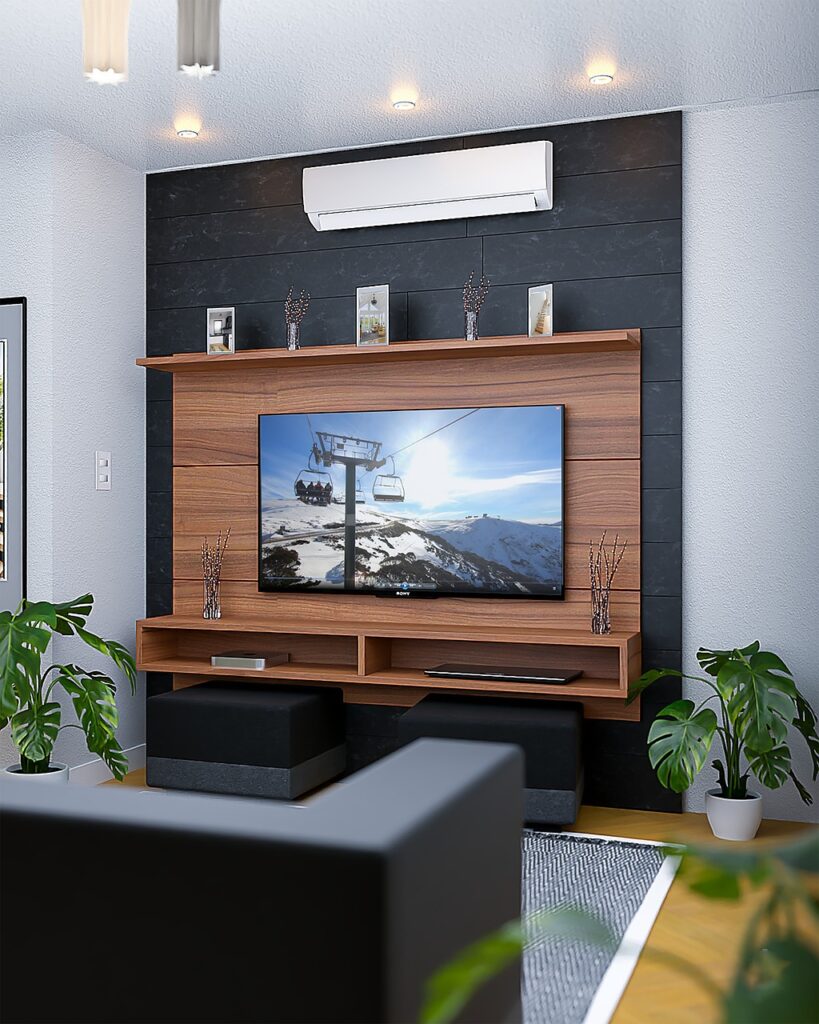Table of Contents
Can I Hide Cables When Wall Mounting?
Can I hide cables when wall mounting? Yes! A wall-mounted TV looks sleek and modern, but exposed wires can ruin the aesthetic. Fortunately, there are several easy and effective methods to hide your cables, making your entertainment setup look neat and organized.
Whether you’re a DIY enthusiast or prefer professional help, this guide will walk you through 5 best ways to hide cables when wall mounting, including in-wall solutions, raceways, and wireless alternatives.

🎯 What is Needed for a TV on Wall Mounting?
1. Can I Hide Cables When Wall Mounting? Best Methods
When wall mounting your TV, you can hide cables in different ways depending on your setup, budget, and wall type. Here are the 5 best solutions:
✅ 1. In-Wall Cable Concealment (Best for a Seamless Look)
- The most professional way to hide TV cables.
- Requires cutting into the drywall to run cables inside the wall.
- Ideal for homeowners and permanent setups.
🛠 What You Need:
✔ Stud finder
✔ Drywall saw
✔ In-wall power kit
✔ Cable pass-through plates
📌 Pro Tip: If you rent or don’t want to cut into the wall, consider external raceways instead.
🏡 Upgrade Your Home Entertainment Setup!
✅ 2. Cable Raceway (Best No-Drill Option)
- A plastic or metal channel that sticks to the wall and hides cables.
- Easy to install and remove without damaging walls.
- Can be painted to match your wall color.
🛠 What You Need:
✔ Cable raceway kit
✔ Adhesive strips or screws
✔ Paint (optional)
📌 Pro Tip: Choose snap-on raceways for easy cable access.
🏡 Perfect for Renters!
✅ 3. Baseboard or Crown Molding Concealment
- A discreet way to run cables along baseboards or ceiling trim.
- Uses pre-existing molding or special hollow molding for wire concealment.
🛠 What You Need:
✔ Hollow baseboard or crown molding
✔ Adhesive or finishing nails
✔ Cable clips
📌 Pro Tip: This method works great for long cable runs across rooms.
✅ 4. Behind Furniture (Quick & Simple Solution)
- Place TV stands, cabinets, or bookshelves in front of cables.
- Use cable clips or zip ties to keep wires hidden.
🛠 What You Need:
✔ Cable clips
✔ Zip ties
✔ Decorative items for extra coverage
📌 Pro Tip: This is the easiest and cheapest method but works best for small setups.
✅ 5. Wireless Solutions (No Wires Needed!)
- Use wireless HDMI transmitters to send video signals without cables.
- Invest in Bluetooth or Wi-Fi-enabled sound systems for wireless audio.
🛠 What You Need:
✔ Wireless HDMI transmitter
✔ Wireless sound system
📌 Pro Tip: Wireless solutions reduce clutter but may have latency issues depending on signal strength.
How to Hide Cables When Wall Mounting: Step-by-Step Guide
Wall mounting a TV gives your space a sleek and modern look, but exposed cables can ruin the aesthetics and create a cluttered appearance. Fortunately, there are several easy and effective ways to hide your cables for a clean, professional finish.
In this guide, we’ll take you through a detailed step-by-step process on how to hide cables when wall mounting, covering different methods from in-wall solutions to external cable management.
Why Should You Hide Cables When Wall Mounting?
Before diving into the step-by-step guide, let’s look at why it’s important to conceal your TV wires:
✅ Aesthetic Appeal: A clutter-free space enhances your room’s look.
✅ Safety: Exposed cables pose tripping hazards and can get damaged over time.
✅ Better Organization: Hiding cables reduces dust accumulation and keeps your entertainment setup neat.
Step-by-Step Guide to Hiding Cables When Wall Mounting
Step 1: Plan Your Setup on Wall Mounting
Before hiding your cables, proper planning is essential to avoid mistakes and ensure a smooth installation process.
📌 Things to Consider Before Hiding Your Cables:
✔️ Identify Wall Type – Drywall, brick, or concrete? Your wall type will determine the best hiding method.
✔️ Check Power Outlet Placement – If your outlet is far from the TV, consider adding a power extension.
✔️ Measure Cable Length – Ensure your cables are long enough to reach devices without excess slack.
✔️ Decide on a Cable Management Method – In-wall solutions or external raceways? Choose based on your budget and preference.
Step 2: Choose the Best Cable Hiding Method
Now that you have a plan, pick a method to hide your cables:
✅ Method 1: In-Wall Cable Concealment (Best for a Seamless Look)
This method involves running your TV cables inside the wall for a completely wire-free appearance.
🛠 Tools & Materials Needed:
✔ Stud finder
✔ Drywall saw
✔ In-wall power and cable management kit
✔ Cable pass-through plates
🔹 Steps to Install:
1️⃣ Mark the Wall – Use a pencil and stud finder to locate wall studs and mark cutout positions.
2️⃣ Cut Holes in the Drywall – Use a drywall saw to make openings for the cable pass-through plates.
3️⃣ Run Cables Through the Wall – Feed your TV’s power, HDMI, and audio cables inside the wall.
4️⃣ Secure the Pass-Through Plates – Attach the cable management plates to keep everything organized.
5️⃣ Connect & Test Your Setup – Plug in all devices and ensure they function correctly.
📌 Pro Tip: Use in-wall rated cables to meet safety regulations and prevent overheating.

✅ Method 2: Cable Raceways (Best for Renters & Easy Installation)
Cable raceways are plastic or metal channels that stick to your wall, hiding wires without cutting into drywall.
🛠 Tools & Materials Needed:
✔ Cable raceway kit
✔ Adhesive strips or screws
✔ Paint (optional)
🔹 Steps to Install:
1️⃣ Measure & Cut the Raceway – Adjust the raceway length to match your cable run.
2️⃣ Attach the Raceway to the Wall – Use adhesive strips or screws to secure it.
3️⃣ Run the Cables Inside the Raceway – Open the raceway, insert the cables, and snap it shut.
4️⃣ Paint to Match Wall Color (Optional) – Use wall paint to make the raceway blend in.
📌 Pro Tip: Choose snap-on raceways for easy access when adding or removing cables.
✅ Method 3: Behind Baseboards or Crown Molding (Discreet & Stylish Solution)
This method involves running cables behind baseboards or crown molding for a hidden look.
🛠 Tools & Materials Needed:
✔ Hollow baseboard or crown molding
✔ Adhesive or finishing nails
✔ Cable clips
🔹 Steps to Install:
1️⃣ Remove the Baseboard/Molding – Carefully detach it using a pry bar.
2️⃣ Run Cables Behind It – Use cable clips to keep wires in place.
3️⃣ Reattach Baseboard/Molding – Secure it with nails or adhesive.
📌 Pro Tip: Works best for longer cable runs across a room.
✅ Method 4: Hiding Cables Behind Furniture (Quickest & Cheapest Solution)
This method requires no installation—simply position your furniture to cover the wires.
🛠 Tools & Materials Needed:
✔ Cable clips or zip ties
✔ TV stand, bookshelf, or cabinet
🔹 Steps to Install:
1️⃣ Bundle the Cables – Use zip ties or cable clips to keep wires together.
2️⃣ Position the Furniture – Place a TV stand, bookshelf, or console in front of the cables.
3️⃣ Secure the Cables – Attach them to the back of the furniture using adhesive clips.
📌 Pro Tip: This is the fastest and most budget-friendly way to hide cables.
✅ Method 5: Wireless HDMI & Streaming Devices (No Wires Needed!)
For a 100% cable-free look, go wireless by using a wireless HDMI transmitter and Bluetooth audio devices.
🛠 Tools & Materials Needed:
✔ Wireless HDMI transmitter
✔ Wireless sound system or Bluetooth speakers
🔹 Steps to Install:
1️⃣ Connect the Wireless HDMI Transmitter – Plug it into your TV and source device (e.g., cable box or gaming console).
2️⃣ Pair Wireless Speakers – Use Bluetooth or Wi-Fi to connect your audio devices.
3️⃣ Test the Setup – Ensure no lag or connectivity issues.
📌 Pro Tip: Wireless solutions minimize clutter but may have latency issues.
Step 3: Secure & Organize the Remaining Cables
Even after hiding most of your cables, some may still be exposed. Here’s how to keep them tidy:
✅ Use Velcro Straps or Zip Ties – Bundle excess cables neatly.
✅ Label Your Cables – Use cable labels to identify each wire easily.
✅ Use Cord Covers for Floor Runs – If cables run along the floor, use a flat cable cover.
Step 4: Final Checks & Testing
Before finishing, make sure everything is secure and working properly:
✔️ Check Cable Connections – Ensure HDMI, power, and speaker cables are correctly plugged in.
✔️ Test Your TV & Sound System – Confirm audio and video quality are not affected.
✔️ Inspect for Loose Wires – Secure any remaining exposed cables.
3. Common Mistakes to Avoid When Hiding Cables on Wall Mounting
🚫 Ignoring Safety – Never run power cables inside walls without a proper in-wall power kit.
🚫 Not Measuring Cable Length – Avoid having too much slack or cables that are too short.
🚫 Using Weak Adhesives – Ensure raceways or clips are secured properly to avoid falling.
🚫 Overloading Power Strips – Use certified surge protectors to prevent electrical issues.
FAQ – Can I Hide Cables When Wall Mounting?
1. Can I hide TV cables in the wall myself?
Yes! But ensure you follow electrical safety codes. If unsure, hire a professional installer.
2. Is it safe to put power cords inside walls?
No, unless you use a proper in-wall power kit. Standard power cords aren’t designed for in-wall use.
3. What’s the easiest way to hide cables without cutting the wall?
Using cable raceways or hiding wires behind furniture is the easiest solution.
4. Can I hide HDMI cables in the wall?
Yes, use an in-wall rated HDMI cable and run it through a pass-through plate for safety.
5. Are wireless HDMI transmitters a good option?
Yes, they eliminate cables, but may have slight lag depending on your Wi-Fi signal.
Final Thoughts
So, can I hide cables when wall mounting? Absolutely! Whether you choose in-wall concealment, raceways, or wireless technology, there are plenty of options to achieve a sleek and clutter-free setup.
If you’re unsure about installing in-wall cable management, consider hiring a professional TV mounting expert for a clean, hassle-free installation.
Follow us on Facebook for Quick Response & Quires – 24/7 Task Connect